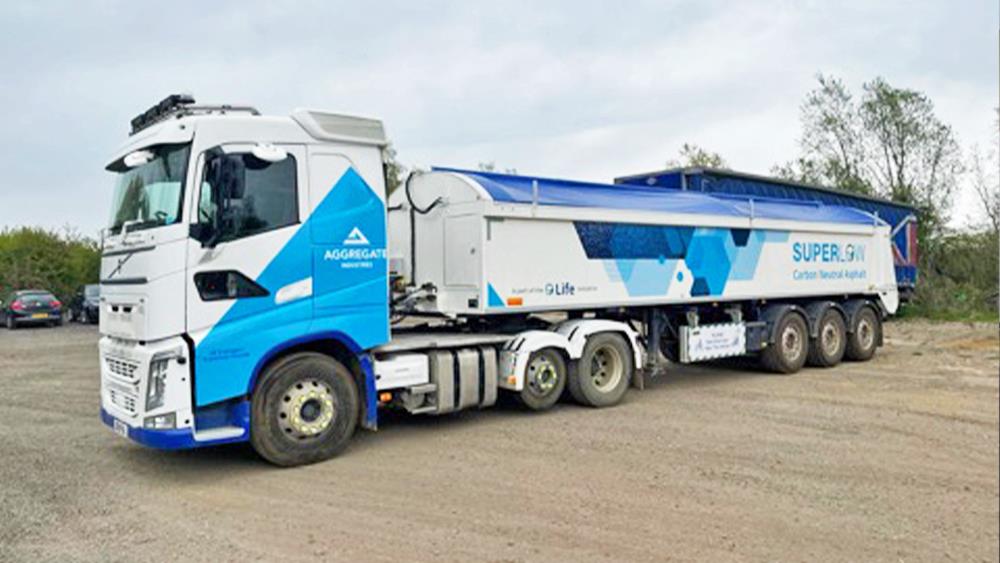

With the ongoing shortage of truck drivers, Aggregate Industries is encouraging the construction industry to use widely available Non-Tipping Trailers (NTTs).
The advice comes comes as the Construction Leadership Council (CLC) warned last month that the availability of hauliers is now a ‘critical nationwide problem’. While there is an estimated shortage due to Brexit of 15,000 drivers, almost 30,000 HGV driver tests have been postponed during the pandemic. The cumulated effects are delays and shortages of materials including bricks, blocks, roof tiles and bagged cement.
As a result, Aggregate Industries is advising the construction industry that one of the ways to improve supply is to use NTTs, many which are available and often under-used.
Aggregate Industries’ NTTs ‘walking floor’ system can raise carrying capacity up to a remarkable 43% per vehicle – essentially reducing the number of vehicles and drivers required. There is also a benefit in the management of logistics on the construction sites: fewer lorry movements are required due to the larger quantity delivered and the ability to tandem tip.
Other key advantages include improved turnaround times, also due to tandem tipping capability, reduced CO2 emissions as fewer vehicle manoeuvres are required. NTTs also offer improved health and safety as they can be used in restricted areas such as tunnels or areas with overhead powerlines or uneven surfaces.
Ben Young, Head of Road Logistics, commented: “At a time when the construction sector faces ongoing challenges around the availability of truck drivers, which is exacerbating supply issues, the need to utilise innovative trailers such as NTTs to alleviate the problem cannot be overstated.
“The fact that these cutting-edge trucks, considered best practice and with a proven track record on many projects already, can deliver up to 40% more materials compared to standard hauls means they should be a no brainer on all construction projects – especially those suffering from a lack of drivers.
“One of the most important benefits of the NNTs is the lower carbon footprint. As a company, we are committed to reducing carbon emissions and by moving just 10% more products via the NTT we can save in excess of 100,000 kg CO2 every year.”
However, according to Aggregate Industries, despite being introduced in 2013, take up of NTTs remains low due to customer inertia, lack of planning and misconceptions over manoeuvrability, tipping speed, and heat loss.
Young added: “Hesitancy over NTTs is disappointing and unfounded – they’ve delivered great results on high-profile projects such as the A14, yet they just aren’t utilised as much as they could be. The latest generation of NTTs not only boast a discharge speed of 53 seconds but also have improved inner and outer turning circle (v 8W) in terms of manoeuvrability.
“The UK construction sector is considered world-class and with the driver shortage likely to continue in the coming years, remaining competitive and cutting edge in the face of Brexit and a post-pandemic recovery has never been more important. This will depend on how the industry can improve gains in productivity, efficiency and technology and NTTs are a vital part of this.”